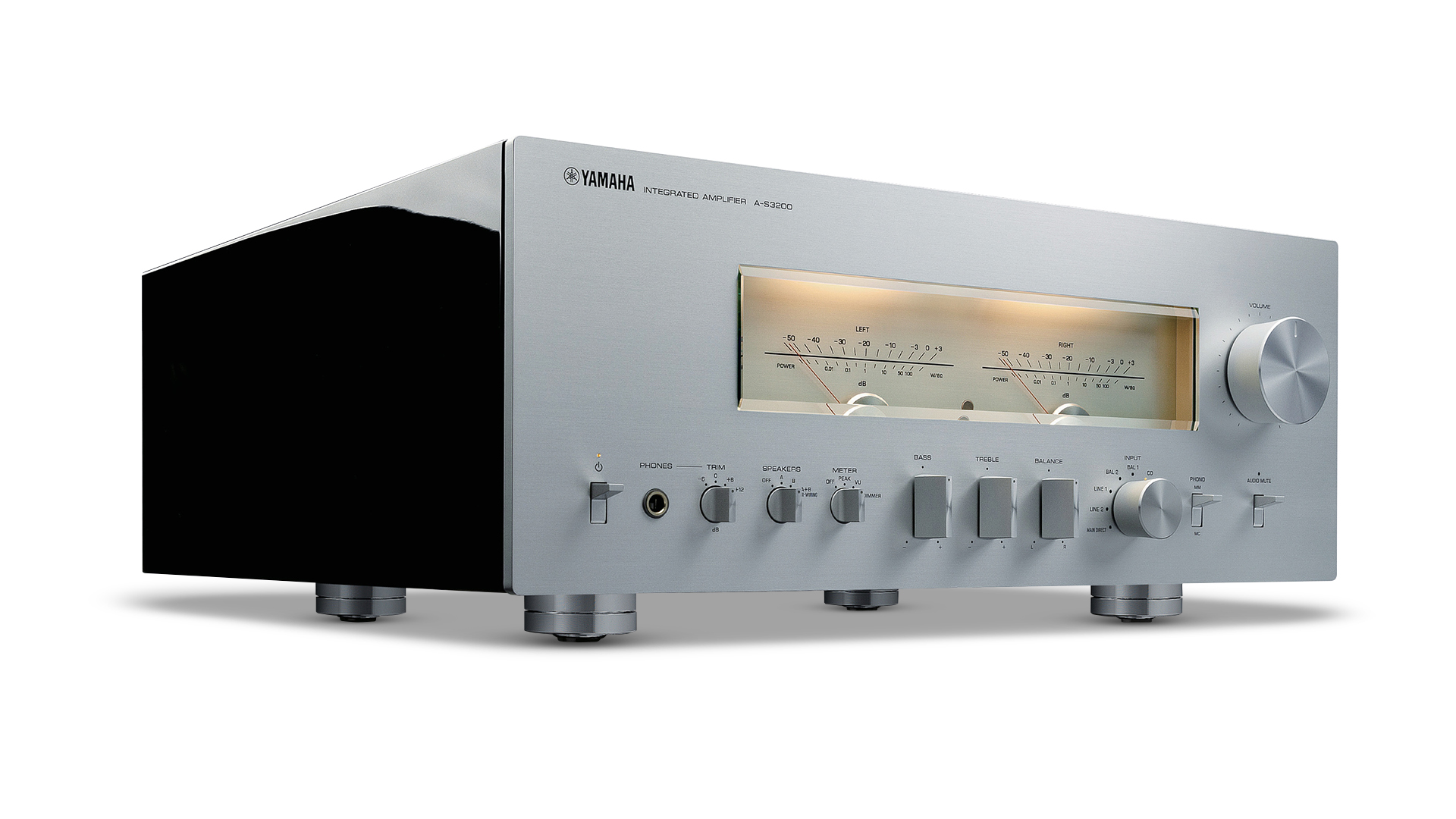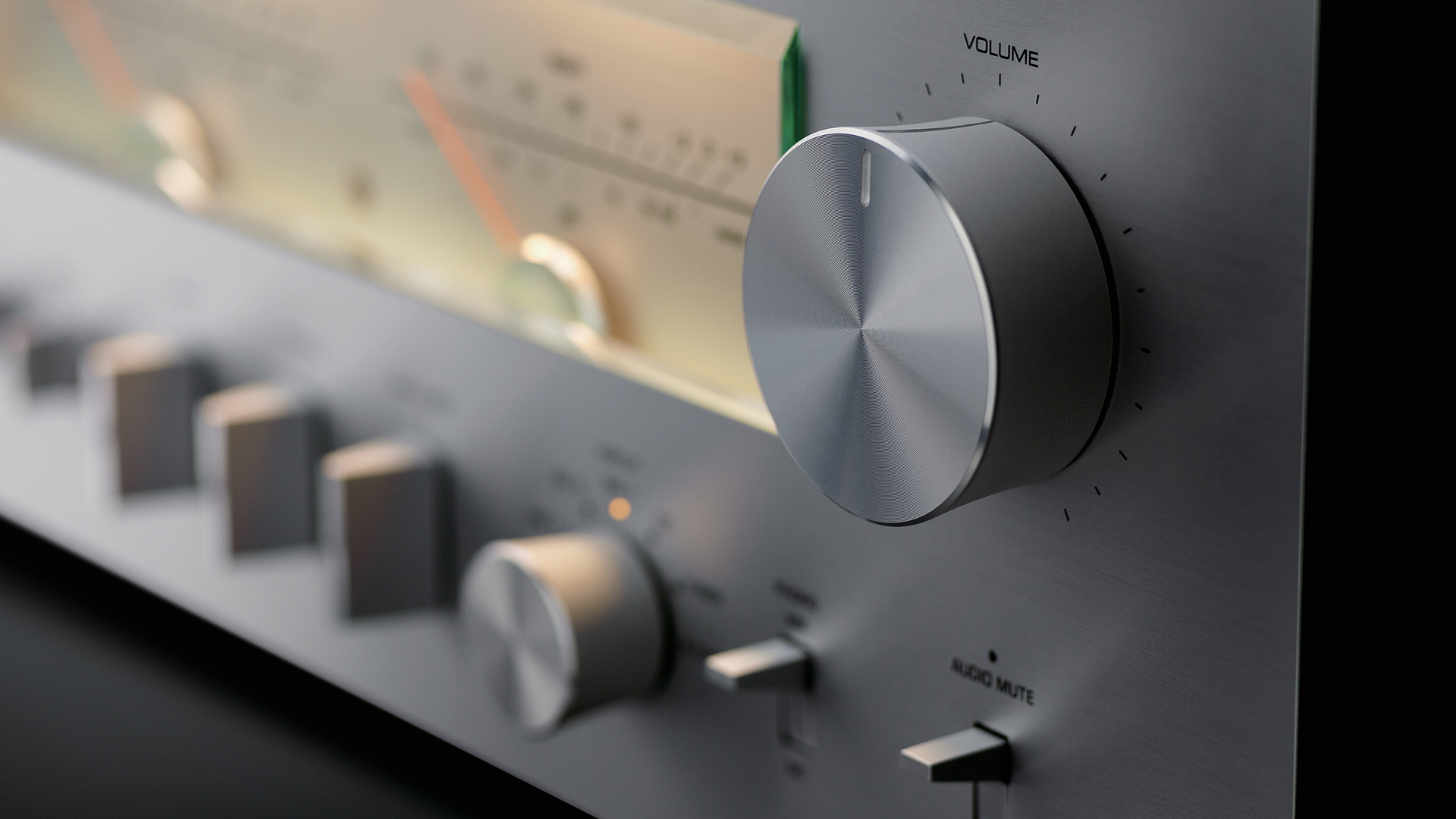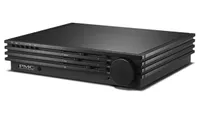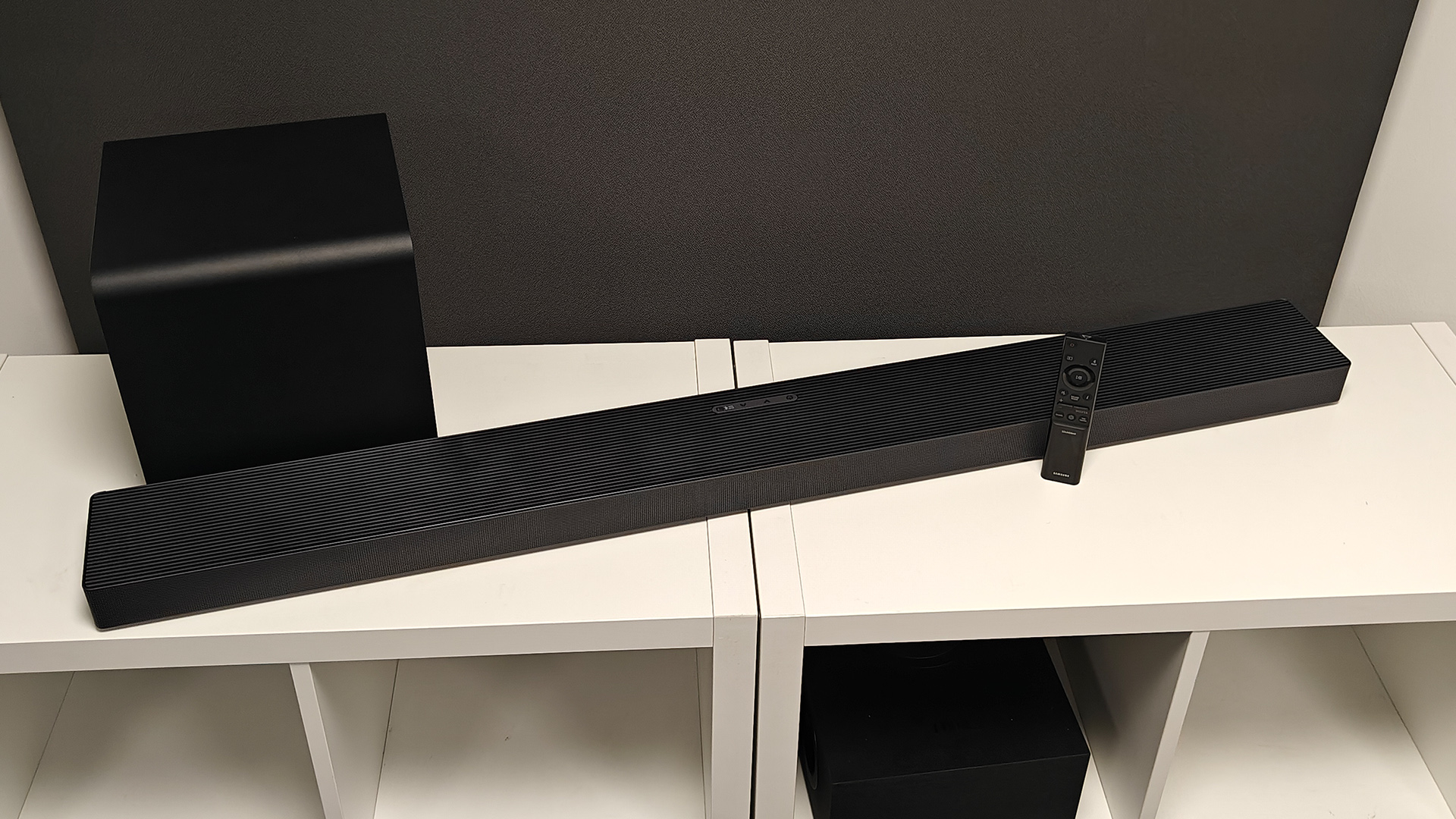What Hi-Fi? Verdict
Yamaha’s flagship A-S3200 integrated amp is a solid, no-nonsense choice for the analogue enthusiast
Pros
- +
Clean and detailed presentation
- +
Impressive levels of resolution
- +
Excellent build and finish
Cons
- -
Midrange is a little lean
- -
Presentation lacks verve
- -
Phono stage needs adjustable cartridge loading
Why you can trust What Hi-Fi?

We originally reviewed Yamaha’s flagship A-S3200 integrated amp in 2021, noting its clear, detailed presentation and excellent build quality. There are subtler, more energetic amplifiers at this higher-end price level, but the A-S3200 is still worth considering if you're looking for a premium stereo amplifier. If you want newer, more capable performers at this price level, however, check out our alternative five-star recommendations in the also consider section at the bottom of this page. Our original review of the Yamaha A-S3200 is presented below unaltered.
Yamaha's A-S3200 isn’t quite what we expected. The retro-styled flagship integrated amplifier isn’t a fashion item, chosen by potential buyers for its nostalgia value. Nor is it a cutting-edge technology statement where Yamaha throws down the gauntlet to rival manufacturers by flexing its undoubted engineering might.
What we have here is a rather straight-laced, all-analogue integrated that’s been designed with considerable care. It has a sensible features list and, most importantly, a performance that justifies its hefty price tag.
Build

The A-S3200 is a beautifully built product, as expected at this level. Every panel lines up perfectly, and each control and switch works with crisp precision. A large part of the amp’s retro vibe comes from those twin signal meters. We love the way they look, but in practical terms, they are not of much use. It’s nice to have them, anyway.
This amplifier is an impressively solid beast thanks to its chunky casework and back-straining 25kg weight, so make sure your support is sturdy enough to be up to the job. It runs a little warm, too, so it’s a good idea to leave plenty of ventilation space.
Take a look inside that immaculate casework and it’s obvious that Yamaha has refused to cut corners. The overall electronic circuit is a fully balanced design in order to minimise noise and improve resolution. There’s a substantial 623VA toroidal mains transformer and a generous 88,000uF of smoothing capacitance.
The engineers have obsessed over the details, such as the quality of the internal connecting cables and the mechanical integrity of the casework. Even the bolts on the feet are welded into place to provide greater rigidity. Those silver-plated brass feet are height adjustable to compensate for any unevenness in the supporting surface, too.
Features

Accepting that this is an all-analogue product, there’s little to complain about when it comes to connectivity. There are six line-level inputs, including two balanced XLR options.
The latest hi-fi, home cinema and tech news, reviews, buying advice and deals, direct to your inbox.
The XLR inputs have small toggle switches positioned underneath and these can attenuate the signal (so there’s not a big jump in level between the single-ended and balanced sources) or swap its phase. These aren’t common features and we’re glad that Yamaha has gone to the trouble of including them.
Those with record players can rest easy. The A-S3200 has a switchable moving magnet/moving coil phono stage, though it’s a shame there’s no electrical loading adjustability to optimise the results for any specific cartridge.
While the phono stage’s 47ohm moving magnet input impedance will work well with pretty much any cartridge of that type, it’s a little odd that Yamaha has chosen to go with a 50ohm value for the moving coil option. While MCs vary in terms of their loading requirements, a 100ohm value would have suited many more cartridges. It’s not a make-or-break situation, but you’ll need to be careful with the cartridge choice if you want optimal results.

Power output 2x 100W
Line level inputs x6 (including balanced XLR x 2)
Phono stage MM/MC
Tape loops 1
Preamp out Yes
Headphone out Yes
Dimensions (hwd) 18 x 44 x 46cm
Elsewhere, there is a preamp output and the ability to connect directly to the power amp section by bypassing the A-S3200’s preamp circuitry. There are two switchable sets of speaker outputs for those that need such things. The chunky brass multiway speaker binding posts feel suitably luxurious.
Any amplifier at this level demands good quality partnering equipment. We use the Naim ND555/555 PS DR music streamer alongside our usual Technics SL-1000R record player. We have Goldring’s 2500 moving magnet cartridge and Kiseki’s Purple Heart moving coil to test both parts of the Yamaha’s phono stage.
At the other end of the system, we use the ATC SCM50 speakers for the bulk of the testing. We also give KEF’s LS50 Meta, Wilson Benesch’s Precision P2.0 and ProAc’s Response D2R a listen to see how this integrated reacts to the differing speaker loads. It turns out that it drives all of these to good levels in our medium-sized test room without issue, at least as far as electrical compatibility is concerned.
Sound

Beginning with the A-S3200’s line stages, we are impressed from the start. This is a surprisingly clean and clear performer that renders the leading edges of notes with crispness without ever veering towards sounding hard or edgy. That’s a difficult balancing act that quite a few alternatives fall foul of.
We’re pleased with the articulate way this Yamaha delivers Beethoven’s Moonlight Sonata, a beautiful piece that comes through with a great deal of subtlety and finesse. The A-S3200’s sound is expressive and nicely textured, and the music flows with elegance, the amp able to reveal slight changes of pace well.
We switch to Radiohead’s In Rainbows set and are pleased to find that the Yamaha has no trouble digging up lots of detail and organising it into a musically cohesive whole. Tracks such as 15 Step can easily sound messy and cluttered, but not through this Yamaha. It’s a responsive performer – one that’s happy to charge along at full throttle when the music demands. We’re particularly taken by the A-S3200’s bass performance, which is taut, tuneful and textured. The lows are seamlessly blended into the midrange, too, thanks to the shared agility and insight.
Tonally, this amplifier stands on the lean side of neutral, particularly through the midrange. This affects the A-S3200’s ability to convey solidity and punch through these frequencies and gives it a more analytical presentation than most. The class leaders produce a more ‘blood and guts’ presentation with this album, leaving the Yamaha to sound a little reserved in comparison.
We’re pleased to find that the A-S3200’s phono stage is a good one. It sounds best through the moving magnet option, delivering much of the clarity and detail we hear through the line stages. The phono stage sounds lively and has us playing record after record thanks to the combination of finesse, control and detail. It’s a relatively quiet circuit, even when we’re using the moving coil option. Here, we’re more aware of a loss of dynamic punch and verve, so if you have a high-quality moving coil-equipped record player, consider going for an outboard alternative such as the Vertere Acoustics Phono-1.
We have no such issues with the 6.3mm headphone output. Yamaha has provided a number of gain settings to allow for the variation of sensitivity between different models of headphones. We use the Beyerdynamic T1 Mk3 along with the Focal Stellia, and both work well, echoing the clarity, low-end punch and overall finesse we hear through the speaker outputs. The company has done a good job here, particularly as some rivals treat the headphone output as a box-ticking exercise and don’t engineer it with care.
Verdict
If you’re looking for a well-equipped high-end integrated amp, this Yamaha is well worth a serious look. It’s carefully engineered and has a hugely appealing sense of sonic precision and clarity. There are certainly more robust sounding alternatives, but make no mistake, the A-S3200 is a classy performer.
SCORES
- Sound 4
- Features 5
- Build 5
Also consider
Cyrus 40 AMP
Cyrus' revived 40 Series has made a huge impression already, with the British brand's exceptional amplifier granting the sort of all-round performance that few rivals can match. Its blend of functionalities and physical connections is superb, while its performance and attractive build make it a delight to listen to and use.
PMC Cor
There's a reason the PMC Cor has been an integral part of our reference system for so long now. Costing roughly the same as the Yamaha, the PMC is an immensely musical performer that continues to thrill with its bold, punchy yet nuanced sound and excellent sonic flexibility. It's a lovely thing, too.
MORE:
Read our guide to the best stereo amplifiers
These are the best phono preamps you can buy
Pair your amp with the best floorstanding speakers
What Hi-Fi?, founded in 1976, is the world's leading independent guide to buying and owning hi-fi and home entertainment products. Our comprehensive tests help you buy the very best for your money, with our advice sections giving you step-by-step information on how to get even more from your music and movies. Everything is tested by our dedicated team of in-house reviewers in our custom-built test rooms in London, Reading and Bath. Our coveted five-star rating and Awards are recognised all over the world as the ultimate seal of approval, so you can buy with absolute confidence.
You must confirm your public display name before commenting
Please logout and then login again, you will then be prompted to enter your display name.



